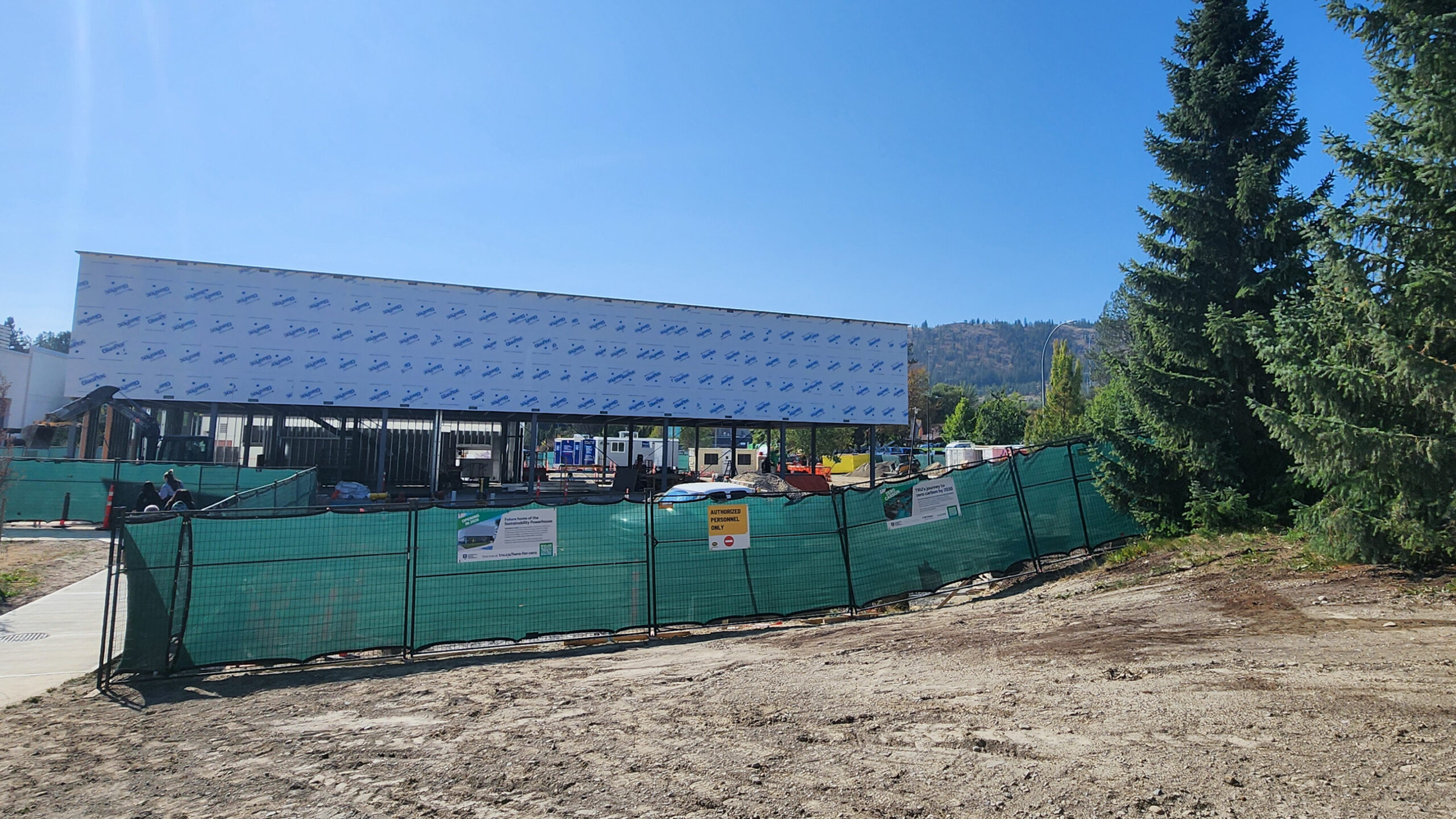Beginning construction in March and continuing through the summer, TRU’s new Low-Carbon District Energy System (LCDES) has been described as an “exceptional” and “cutting-edge” piece of infrastructure, which could push the university to its goal of carbon neutrality by 2030.
Installation of the LCDES is a campus-wide project, with construction taking place from the Arts and Education (A&E) building to Old Main, and extending as far as the Ken Lepin Science building. The dedicated LCDES page on the university’s website encourages students, faculty and staff to remain patient, as any inconveniences from construction will only be temporary and regular mobility around campus will resume as soon as relevant work has been completed.
But how soon that will be remains a mystery to students, many of whom have found the construction at best an inconvenience, and at worst a genuine hindrance to their on-campus experience.
“It’s incredibly inconvenient,” Luigi Guilles said. A second-year communications student, his classes this semester are mostly held at Old Main. “I’m struggling with being on time to things, and I have to run so much now.”
For others, this disturbance in campus life presents itself more urgently.
“I have some physical disabilities,” said interdisciplinary studies student Payton Parker. “So I don’t have a regular backpack; I have a bag that’s on wheels. It might be a small thing, but walking to and from the different areas on campus, trying to pull my wheels on the dirt paths that are lumpy and awkward and in these weird spots is really difficult.”
Students easily point to several other issues, like the blocking off of staircases, which affects people who need handrail support when on an incline; the poor air quality around construction areas that is problematic to those with respiratory issues; and the re-routing of regular paths to longer ones that present a serious challenge to people with disabilities.
The discomfort is worsened, many students believe, by their lack of awareness of what is even being built. When asked, most suggested a vague sustainability project, but were unfamiliar with any details beyond that.
The LCDES is one of the largest of its kind in North America, and will supply more than 90% of heating energy requirements for all 13 academic buildings connected to it. The system aims to eliminate 100,000 tonnes of GHG (greenhouse gas) emissions over 30 years.
The first Canadian university to earn two platinum ratings in the Sustainability Tracking, Assessment & Rating System (STARS), TRU has quickly become a leader in all things sustainability. This project is another step in its promise of a greener campus, country, and planet.
But does that make all the trouble on campus worth it? Some students feel that it does.
“It’s good that TRU is trying to put a more environmentally friendly foot forward,” said fourth-year student Izzy Christensen. “It’s a step in the right direction, which is all you can hope for right now. I think it’s worth the hassle.”
Yet others remain unmoved, suggesting that, despite the good cause, the execution was poorly managed.
“They need to be as focused on students today as they are on students in the future,” Guilles added.
Many chalk it up to poor timing, insisting that the project, though worthwhile, should have been completed in August.
“When it was started, I expected it to be over before September,” Dupinder Singh, a 2nd-year psychology student, said. “But now, it seems like it’s going to take a whole semester to open up the regular paths.”
Whether or not it will take that long is a toss-up for many. When asked to predict the timeline of construction, answers ranged widely.
“Hopefully the goal is to finish at the end of the month, or at the latest mid-October,” Biology major Larvine Osanya said. “But realistically, I think it’ll end in January.”
“I genuinely think it’s like 40% done,” Guilles guessed. “Like, not even half.”
A general trend was the lack of awareness about basic facts of the construction, which left many feeling disregarded and uninformed. One student, Charles Rankin, believes communication was one of the university’s biggest shortcomings on the issue.
“The communication aspect with students could have been a little more obvious and thoughtful,” he said. “There’s been some acknowledgment, and a few odd articles here and there about their sustainability efforts, but it feels like there was an opportunity missed to provide a better explanation for what they’re doing and why it’s important.”
Per the details on their website, several parts of the campus will begin opening up in September and October, from accessibility paths to parking lots and building entryways. Whether these plans are reflected in real time remains to be seen.
Regardless, many students consider the accessibility issue to be an urgent one and believe that solutions should be found immediately.
“There are ways to go about doing construction while ensuring accessibility for all on campus,” Parker said. “There should have been an accessibility inspection before construction happened, to ensure that people with mobility aids or disabilities can actually access the campus comfortably.”
“What is a pain for most people becomes an actual barrier for people with disabilities,” Parker added. “Yes, I’m still disabled, but I have the privilege of not having to use a mobility aid every day. So I feel it’s my responsibility to speak up for those who don’t have that privilege.”

